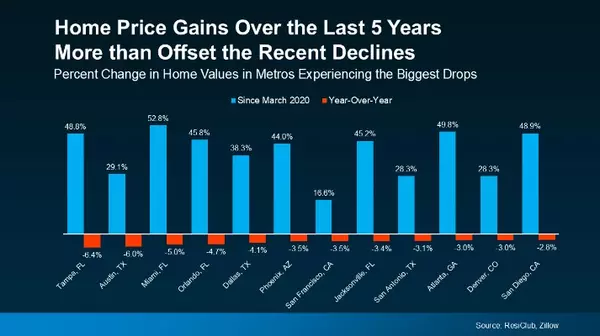ICE High-Profile Arrests in Los Angeles
Federal Agents Make High-Profile Arrests in Los Angeles and Beyond
Federal law enforcement agencies have ramped up enforcement operations in recent weeks, making a series of high-profile arrests across Los Angeles and other parts of the country. These actions have sparked widespread protests, raised concerns about excessive force, and ignited debate over the tactics and priorities of federal authorities.
Large-Scale Immigration Raids in Los Angeles
In early June, Immigration and Customs Enforcement (ICE), working alongside Homeland Security Investigations (HSI), the FBI, and the DEA, conducted coordinated raids at multiple locations in Los Angeles, including the Westlake District, downtown LA, and South LA. About 44 people were arrested in these operations, most for administrative immigration violations. Witnesses described heavily armed agents arriving in unmarked SUVs and armored vehicles, blocking off streets, and using drones for surveillance. Advocacy groups and legal observers called the raids “military-style” and criticized the limited access for attorneys to those detained. The operations led to citywide protests and public outcry from community organizations and local residents.
Use of Force and Local Backlash
In Santa Ana, cellphone video captured federal agents, identified as Border Patrol, detaining and striking a man who witnesses said was a landscaper working in the area. The video, which quickly circulated on social media, showed agents punching the man before forcing him into an unmarked SUV. The incident, along with arrests at a local car wash, drew dozens of protestors to the streets, demanding an end to such operations and questioning the necessity of force used during the arrests.
Targeting Violent Gangs and Criminal Networks
Federal agents are also focusing on individuals with alleged ties to violent gangs. In one notable case, ICE and the FBI arrested David Alejandro Orellana-Aleman, a high-ranking MS-13 leader, in Maryland. Orellana-Aleman, a Salvadoran national, is charged in his home country with firearm possession, extortion, and terrorist affiliation. Authorities say he controlled MS-13 operations across the US, Mexico, and Europe. His arrest, officials said, dealt a significant blow to the gang’s leadership structure in the US.
Violence Against Federal Agents
The risks faced by federal agents were underscored by the arrest of Gabriel Hurtado-Cariaco, a Venezuelan national and alleged Tren de Aragua gang member. During an operation in Nebraska, Hurtado-Cariaco violently attacked both an ICE special agent and an FBI agent, causing serious injuries. He was ultimately apprehended and now faces federal charges, including attempted murder of a federal officer. Officials noted a sharp increase in assaults against federal agents, vowing to prosecute such cases to the fullest extent.
Protests and Arrests During Enforcement Actions
Federal authorities have also responded to protests that erupted during recent enforcement operations. In Omaha, ICE arrested four protesters who were caught on video damaging federal property and threatening officers during a raid targeting individuals accused of using stolen or fraudulent identities. Those arrested now face felony charges related to assaulting and impeding federal officers, as well as property damage.
Community Response and Ongoing Debate
The recent wave of federal enforcement actions has sparked intense debate in Los Angeles and beyond. Community leaders and advocacy groups have condemned what they describe as aggressive and intimidating tactics, while federal officials defend their actions as necessary to uphold the law and protect public safety. As investigations continue and more details emerge, the tension between federal agencies and local communities shows no sign of abating.
Federal enforcement operations in Los Angeles and other major cities have primarily targeted a range of serious criminal offenses. The most commonly targeted crimes include:
-
Drug trafficking and distribution: Many of those arrested have prior convictions or are suspected of involvement in the distribution of controlled substances, including heroin and cocaine.
-
Violent crimes: This category includes assault (sometimes with a deadly weapon or firearm), robbery, sexual battery, and domestic violence.
-
Crimes against children: Charges such as cruelty to children have been cited among those arrested.
-
Firearms offenses: Discharging firearms at inhabited dwellings or vehicles, assault with semi-automatic firearms, and personal use of firearms are among the offenses listed.
-
Theft and property crimes: Arrests have included individuals with convictions for grand theft larceny, petty theft, and receiving stolen property.
-
Immigration-related offenses: Many operations focus on individuals with immigration infractions, including using counterfeit documents, alien smuggling, and conspiracy to transport illegal aliens.
-
Obstructing law enforcement: Some individuals have been arrested for obstructing public officers or impeding law enforcement during protests or raids.
These operations often target individuals with multiple or serious prior criminal convictions, as well as those identified as gang members or having ties to organized crime. The focus on these offenses reflects a strategy to prioritize the removal or prosecution of individuals considered threats to public safety.
Certainly! Here’s your answer with no footnotes or references:
Immigration infractions are currently one of the most frequent triggers for federal law enforcement raids, especially under the latest enforcement priorities. In Los Angeles and across the country, ICE and other federal agencies have sharply increased the tempo of operations targeting individuals suspected of civil immigration violations—such as overstaying visas, lacking legal status, or using counterfeit documents.
Frequency of Raids:
ICE is now averaging more than 1,300 arrests per day nationwide, with some days reaching around 2,000 arrests. This marks a significant increase from previous years and reflects a directive to maximize the number of arrests, regardless of criminal background.
Types of Operations:
Raids are occurring at workplaces, homes, public spaces, and even previously protected locations like schools, hospitals, and courthouses. Worksite raids and large-scale sweeps in immigrant-heavy neighborhoods have become common.
Primary Focus:
While ICE states it targets individuals with criminal records, a substantial portion of those arrested are detained solely for administrative immigration violations, not criminal conduct. Less than 10% of those recently booked into ICE custody had violent criminal records; many had no criminal history at all.
Geographic Scope:
These enforcement actions are happening in major cities like Los Angeles, Chicago, and others nationwide, often accompanied by a visible show of force and sometimes leading to public protests and backlash.
Summary:
Immigration infractions—such as being present in the country without legal status or violating visa terms—are now the most common reason for federal law enforcement raids, with operations occurring daily and at an unprecedented scale.
Categories
Recent Posts










GET MORE INFORMATION

